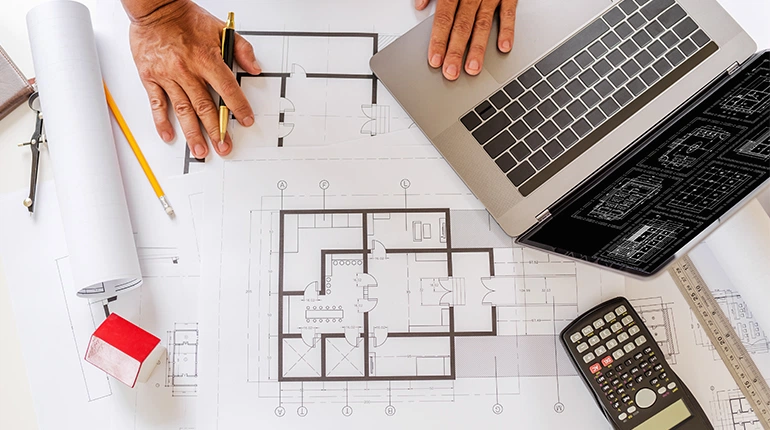How to Streamline Your Estimating Process
Efficiency and accuracy in construction estimating are paramount to project success, with effective streamlining allowing your process to significantly decrease overheads, boost productivity, and enhance decision-making capabilities. Employing best practices and advanced tools, companies can deliver more precise estimates without cost overruns while satisfying clients. This article presents actionable strategies designed to optimize estimating processes while including key concepts like construction Estimating services, cost estimation services, 2D drafting services, and elemental cost analysis as part of its framework.
Understanding of Cost Estimation
Cost estimation entails forecasting the total expenses associated with a construction project and providing accurate forecasts that account for labor, materials, overhead costs, and agencies. Construction professionals often turn to cost estimation services for accuracy, consistency, and efficiency; these offer detailed insights into every component cost, helping contractors manage resources more efficiently.
Engaging professional construction estimating services can be transformational for many businesses. Not only can this approach reduce errors, but it will ensure bids stay competitive while remaining profitable.
Leverage Technology to Maximize Efficiency
Modern software solutions have revolutionized construction estimating. Building Information Modeling (BIM) and cost estimating software have dramatically streamlined this process by automating calculations, producing reports, and updating data, which is beneficial when working with 2D Drafting Services, providing seamless integration of project designs and cost estimates.
Digital platforms enable estimators to extract quantities directly from architectural plans, saving both time and effort spent manually measuring and entering data manually. Their integration also enhances accuracy, as digital systems tend to be less susceptible to human error; cloud solutions enable teams to collaborate remotely while giving all members of a project access to all project updates simultaneously.
Establish a Standardized Workflow
Standardizing is key to streamlining the estimating process, and creating a standardized workflow ensures all team members take part in following similar steps, eliminating confusion or delays. Components of such an ideal workflow could include:
Templates: Use templates for various project types to save time on repetitive tasks. Checklists: Utilize checklists as an effective means of making sure all cost factors, from materials to labor, have been considered in any cost estimates.
Historical Data: To make informed estimates for similar jobs, draw upon historical information from past projects to create reliable cost estimation services and ensure standardization, so estimates will not only be faster but more precise as well.
What Is Elemental Cost Analysis?
Elemental Cost Analysis (ECA) is a systematic way of breaking down construction project expenses into their individual components or categories in order to gain clarity into resource distribution across projects as well as potential areas where savings could be achieved through cost reduction strategies. This methodology gives a good view into resource usage while outlining where cost-cutting measures could be achieved more easily.
Elemental cost analysis can be invaluable during the early phases of a project, providing stakeholders with an overview without needing detailed design information. By organizing costs into categories like foundations, structure, and finishes, this analysis allows stakeholders to make more informed decisions regarding budget allocation and design changes.
Integrating Element Cost Analysis into your estimating process enhances transparency and increases communication with clients while aligning perfectly with professional construction Estimating services that often employ this technique for accurate, actionable estimates.
Invest in servicing and Expertise
While technology plays an integral part in modern business operations, its human component remains equally significant. Ensuring your team possesses the knowledge needed to successfully use cutting-edge methodologies is a smooth run of any operations environment.
Consider enrolling in training programs that cover key elements of cost estimation, such as:
Software Proficiency: Develop software proficiency among your team through exposure to cutting-estimating and drafting tools, while simultaneously increasing their technical knowledge regarding construction techniques and materials. Technical Skills: Increase understanding of construction techniques and materials as well as develop their ability to analyze data to uncover cost cost-saving unities
Companies looking for additional expertise may benefit from outsourcing construction Estimating and 2D drafting services; doing so enables access to expert estimators who are adept at handling complicated projects with ease.
Conduct Regular Reviews and Updates
An efficient estimating process does not remain static over time. Performing periodic reviews to update methods ensures they stay aligned with industry standards and changing project requirements; key project areas to focus on include:
Market Rates: Staying apprised of changing material and labor costs is essential to staying competitive in business today.
Technological Advancements: Keep abreast with any software tools or updates being introduced into the marketplace, while continuing to learn from team members and clients to help identify areas for enhancement and improvements.
Integrating feedback loops and data analysis into your process ensures continuous improvement, making estimates more precise and affordable over time.
Work Together Collaboration among teams is vital for accurate estimates. Estimators should work collaboratively with designers, engineers, and project managers to ensure all aspects of a project are covered when developing estimates.
With 2D Drafting Services, project teams can generate precise project blueprints that serve as the basis of accurate cost estimations. By working collaboratively on their designs and identifying any potential problems early, teams are better able to collaborate efficiently to optimize designs while staying within budgetary guidelines to reach project goals.
Monitor and Measure Performance
It is imperative to regularly evaluate how closely your estimates match actual project costs to discover discrepancies and enhance your estimating process over time. Key performance indicators (KPIs) to keep an eye on include:
Accuracy: Evaluate how closely estimates match actual costs.
Efficiency: Monitor how quickly estimates can be produced.
Profitability: Assess whether they align with project margins.
By evaluating these metrics, you can gain insights into strengths and weaknesses within your process and then use this data-backed information to make smarter decisions to increase efficiency.
Conclusion
Enhancing the accuracy, efficiency, and reliability of estimates in construction is paramount to being competitive in today’s grueling construction market. Businesses that take steps like adopting professional Construction Estimating services, cost estimation services, and 2D Drafting Services as part of their estimating processes can deliver accurate, timely estimates with ease through Elemental Cost Analysis or other techniques like these can deliver accurate, timely estimates that ensure success for them and their clients.
Investment in technology, standardizing workflows, and encouraging collaboration not only saves time but also strengthens client trust and project outcomes. When implemented strategically, your estimating process can become an indispensable asset in driving growth and profits in your construction business.
Keep an eye for more news & updates on Tamasha!






